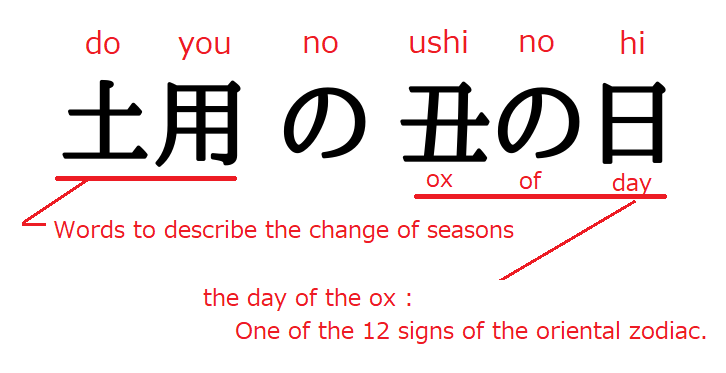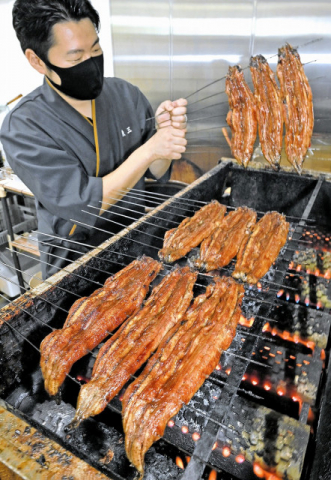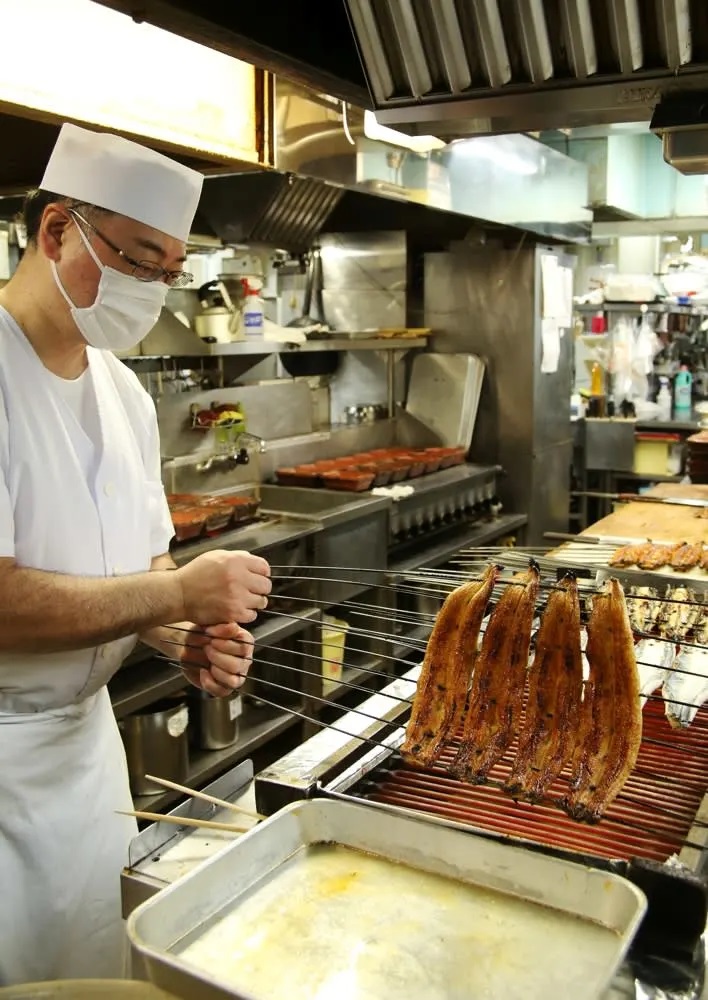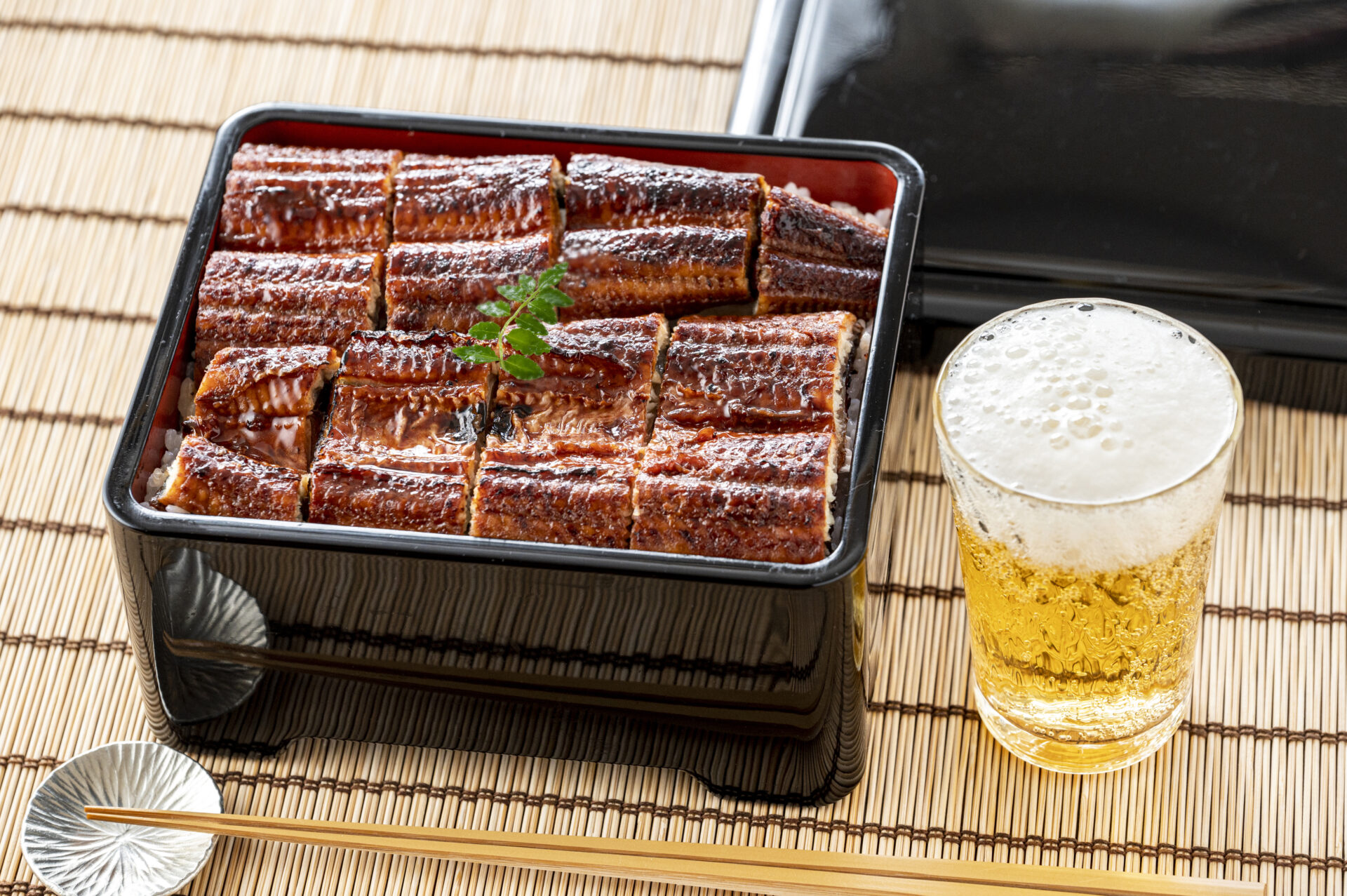In Japan, there is a custom of eating eels with high nutritional value on a summer day called “土用の丑の日, Doyou no Ushi no hi” (the day of the Ox in Doyou) to survive the hot season.
Origin
The custom of eating eels during the hot season already existed in the late 8th century. This custom is evidenced by its inclusion in the “万葉集,Manyoshu”, Japan’s oldest extant collection of poetry, compiled in the late 8th century.
And the custom of eating eels on the day of the Ox in Doyou is said to have started around 1775, according to the essay “明和誌, Meiwa shi” written in 1822 – 1823, which collected topics at that time.
When is the day of the Ox?

“土用の丑の日” means the day of the ox in “土用,doyou”. Sorry, I don’t know how to say “土用, Doyou” in English.
土用, Doyou

“土用の丑, Doyou no Ushi” (The ox in Doyou) is a term used to describe a specific day. Doyou refers to the 18 days immediately preceding the change of the four seasons (spring, summer, fall, and winter). In other words, there are 72 days in a year during Doyou. Among them, “Doyou” in “The day of the ox in Doyou” refers to the summer period.
丑の日, Ushi-no-hi (The day of the ox)

And the day of the Ox is one of the 12 signs of the oriental zodiac and represents the second day of the 12-day cycle. In other words, the day of the Ox in Doyou is the second day of the 12-day cycle within the 18 days of Doyou. Therefore, there are one or two Ox days during the Doyou period.
The following is a diagram of the day of the Ox in Doyou. Because the cycle of Doyou and the day of the ox is different, the number of days varies each year, with one or two of the 18 days being the day of the Ox.
I have never seen an illustration of it before, and I take the liberty of assuming that I am probably the first person in the world to illustrate it.

Eels are delicious.
Unagi is served as part of unadon (sometimes spelled unagidon, especially in menus in Japanese restaurants in Western countries), a donburi dish with sliced eel served on a bed of rice. A kind of sweet biscuit called unagi pie made with powdered unagi also exists. Unagi is high in protein, vitamin A, and calcium.
unagi-Wikipedia
Specialist unagi restaurants are common in Japan, and commonly have signs showing the word unagi with hiragana う (transliterated u), which is the first letter of the word unagi. Lake Hamana in Hamamatsu city, Shizuoka prefecture is considered to be the home of the highest quality unagi; as a result, the lake is surrounded by many small restaurants specializing in various unagi dishes. Unagi is often eaten during the hot summers in Japan. There is even a special day for eating unagi, the midsummer day of the Ox (doyo no ushi no hi).
Most Japanese people love eel and eat it even outside of the day of the ox in Doyou. It is generally known as one of the most expensive foods.
How to eat.
Eel is often made into “kabayaki” and eaten. “Kabayaki” is made by cutting the eel open on its back, boning it, grilling or frying it, skewering it, and dipping it in a sweet soy-sauce based sauce.
That sauce could be 100 years old.
And one characteristic and interesting custom is to continue to use the sauce used in cooking by splicing it. Some restaurants have been using sauce for more than 100 years.
Is sanitation safe?
Some people may be concerned about sanitation when they hear this.
However, it seems that hygiene is maintained for the following reasons.
1) Because they are periodically heat sterilized. One is because the eel is heated and sterilized by the heated eel.
2) Because the ingredients of the sauce are high in sugar and salt and do not spoil easily.
And the following simulation results are also available: if 30 liters of sauce is used daily and 1 liter is added at the same time, the first 30 liters of sauce will be reduced to 0.00013 liters after 1 year.
This means that there is no hygiene problem because the amount of bacteria is smaller than the bacteria.


After all, eels are delicious.
I have written a lot about it, but eels are really delicious. I highly recommend that you visit an eel restaurant and eat it.




Comment List